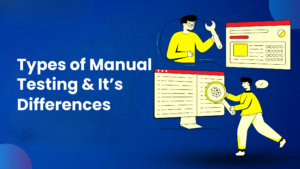

Functional Testing Types
In Software Testing. Functional testing is a type of testing that focuses on verifying if a system or application operates properly in accordance with its specifications. In other words, it involves testing the software’s many operations or features to confirm that they work as expected and meet the requirements.
Functional testing involves examining the software’s behaviour by entering data, interacting with the user interface, and comparing the actual results to the intended outcomes. The purpose is to detect any flaws, errors, or deviations from expected behaviour and guarantee that the program performs reliably in real-world circumstances.
Functional testing is essential because it makes sure your application functions properly. Even if a program passes non-functional tests and appears to run well, it fails to deliver what was expected to end users. As a result, functional testing serves as a thumb test, verifying that your application not only works but also delivers the crucial outcomes required by its users.
Unit testing is the process of testing each of the parts or units of software in isolation. Consider it an examination of your application’s core components. Developers can quickly find mistakes or bugs by developing automated tests for each unit of code, verifying that each component works properly.
Integration testing verifies the relationships between various software modules or parts. It guarantees that these integrated components communicate and share data efficiently. This form of testing is critical for identifying integration difficulties early on in the development process.
System testing evaluates the complete system to see if it fits with the requirements. This thorough approach examines every component of the software, including functionality, performance, and dependability. It copies real-world usage scenarios to guarantee that the system works appropriately in various settings.
Acceptance testing evaluates whether the software fulfils the expectations of its end users or stakeholders. It involves running the program in a real-world setting to ensure that it provides the expected functionality and user experience. User acceptability testing (UAT) is a popular type of acceptance testing in which actual users test the product prior to its final release.
Regression testing verifies that recent software modifications or updates have not resulted in new issues or regressions. By re-running previously executed test cases, testers can make sure that the existing functionality stays unchanged after revisions. This contributes to the overall quality and stability of the software.
Smoke testing is a very fast and early test that checks the software’s basic operation. It’s like taking a brief check to make sure everything is working well before delving deeper. This initial test identifies any serious flaws early on, ensuring that the build is stable for future testing.
Sanity testing is a specific test that verifies specific functionality or software components following minor changes or problem fixes. It’s like giving the system a short sanity check to make sure everything is still in working condition. This form of testing contributes to the general integrity of the software.
UI testing evaluates the software’s graphical user interface (GUI), assuring that it is easy to use and visually appealing. Testers analyse the interface to make sure that it fits design standards and works properly from the user’s perspective. This sort of testing attempts to improve the overall user experience.
Usability assessment measures the ease with which the software is to use. Testers observe actual users engaging with the product to find usability faults or pain areas. Understanding the user’s point of view allows developers to make informed judgments about improving the software’s usability and user experience.
Compatibility testing indicates that the software works properly on several platforms, devices, and browsers. It ensures that the software is compatible with a variety of contexts and setups, allowing customers to utilise it easily regardless of their setup. This form of testing helps to increase the software’s reach and accessibility.
Understanding the different types of functional testing is crucial for ensuring the quality and reliability of software applications. Whether you are focused on unit testing for individual components or system testing to evaluate the overall performance, each type plays a vital role in the development process. Implementing an extensive testing plan that includes different functional testing types allows you to identify problems and issues early on, resulting in a better user experience and product success. Stay informed, be proactive, and let functional testing be your guiding light on the path to providing high-quality software solutions.
Also Mastering functional testing is a valuable skill that can elevate your proficiency as a software tester. By understanding the importance of functional testing, familiarizing yourself with various techniques and tools, and practicing in real-world scenarios, you can become a more effective and efficient tester. Remember, continuous learning and improvement are key in the dynamic field of software testing. Whether you are a beginner looking to enhance your skills or an experienced professional seeking to stay up-to-date, investing time and effort in learning functional testing will undoubtedly benefit your career in the long run. So, keep exploring, experimenting, and honing your functional testing abilities to unlock new opportunities and contribute to the success of software projects. Happy testing!
Consult Us


















